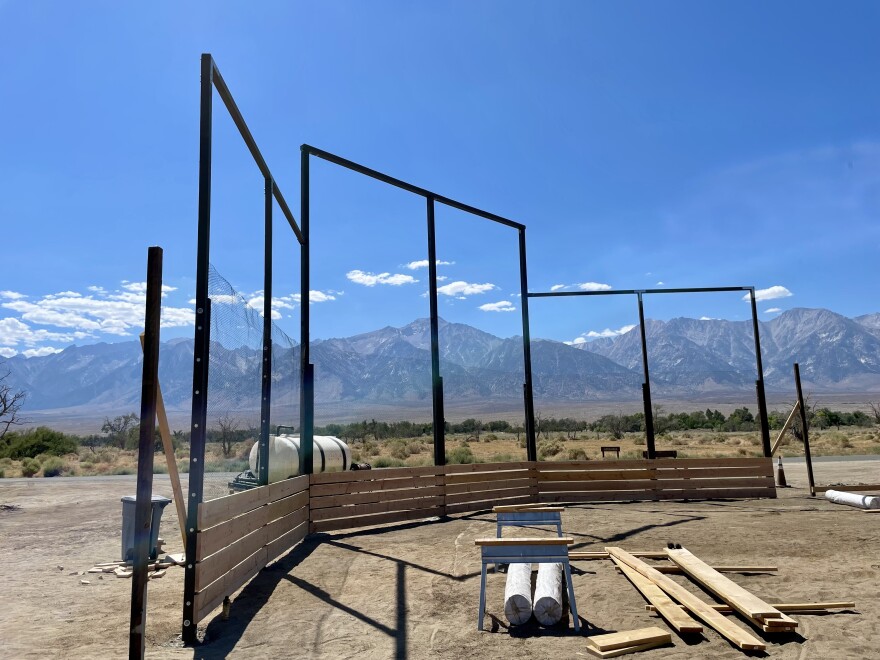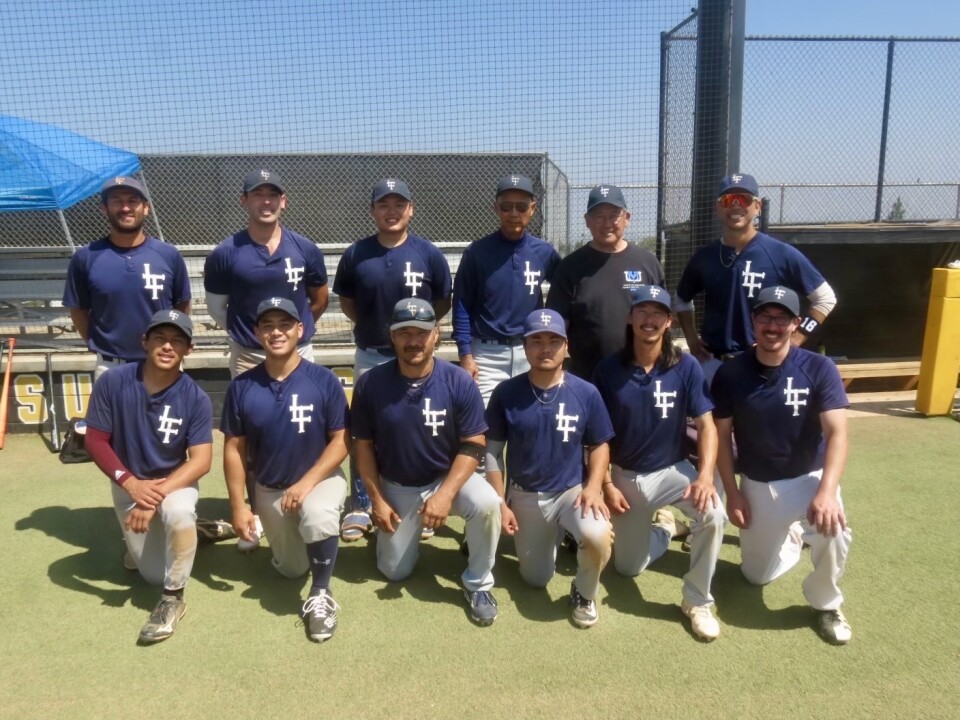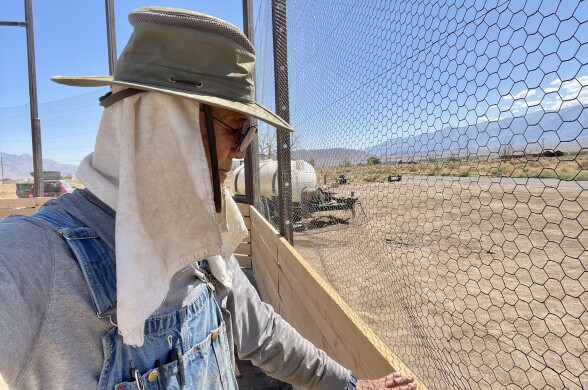Truth matters. Community matters. Your support makes both possible. LAist is one of the few places where news remains independent and free from political and corporate influence. Stand up for truth and for LAist. Make your year-end tax-deductible gift now.
An LA artist is rebuilding the baseball field at a former incarceration camp for Japanese Americans

For decades, the Manzanar National Historic Site has educated visitors on a painful chapter of United States history: the incarceration of thousands of Japanese and Americans of Japanese descent during World War II.
A new project is now putting the finishing touches on something that the site's managers hope will bring more healing: the rebuilding of Manzanar's baseball field.
“The baseball field was a part of the camp where people could live the life that they had before the war,” said Dan Kwong, a Los Angeles multimedia artist. “It was a place where they could express their American identity through this quintessential American activity, the game of baseball.”
Kwong is the lead volunteer on the project to rebuild the field, working alongside the National Park Service.
Kwong's late mother was a teenager when the government ordered her and her family to leave their South L.A. home and report to Manzanar.
Apple pie, baseball, and incarceration
After the U.S. declared war on Japan, it incarcerated people of Japanese ancestry at 26 camps, including Manzanar. Two thirds of the incarcerated were born and raised in the U.S.
That process has been called incarceration, internment, and detention. But many people believe those are euphemisms.
“This place meets the dictionary definition of a concentration camp,” said Manzanar National Historic Site Park Ranger Sarah Bone.
The fabric of Japanese American neighborhoods was torn apart and individuals and families struggled to regain their social and economic footing when they were freed from the camps after the end of the war.
“People Dan's age and my age, so often we would hear our parents talking about camp, not realizing they were talking about a concentration camp … it just wasn't openly discussed,” said Mitch Maki, president and CEO of Go For Broke, an L.A.-based organization that commemorates Japanese American World War II veterans.
Displays at Manzanar detail President Franklin Roosevelt’s use of the term concentration camp to describe Manzanar and the other sites.
“It was wrong what we did to them,” said Chris Siddens, a retired construction worker who lives in nearby Independence.
He’s lending his construction know-how and elbow grease to the project.

Siddens has strong feelings about the injustice the incarcerated people endured. He’s not Japanese American. He’s a self-described history nut since he was a teenager growing up in the 1970s east of San Diego. But after meeting Japanese American survivors of the camps, he now believes the history he learned in high school left out a lot.
“I'm giving back to the generation that was wronged,” Siddens said.
Fall baseball at Manzanar
The Historic Site has worked to balance stories of resilience within the camp with stories of the loss of constitutional rights.
“And those two things are both true, but it's hard for the average visitor to see all of that easily,” Bone, the park ranger, said.
The site has already rebuilt a large garden as well as parts of the orphanage that operated in the camp.
Since August, Kwong, Siddens, and historic site staff, along with several dozen others who’ve driven to the Owens Valley, have nearly finished the baseball field where only the archeological remains of the one before rested.
They made sure the distance between the bases is 90 feet. They welded the backstop, and built bleachers and benches out of wood.
The supplies are paid for by a grant from the Fund for People in Parks.
I think of all my family members and so many other friends of mine whose families were incarcerated here, just how excited they would be to know that we're doing this really exciting, inspiring, and healing thing.
Kwong received permission from the Park Service to hold a game this fall on the rebuilt baseball field between the Japanese American baseball team he plays for, the Lil Tokyo Giants, and a team from Lodi.
“I think of all my family members and so many other friends of mine,” Kwong said, “whose families were incarcerated here, just how excited they would be to know that we're doing this really exciting, inspiring, and healing thing.”

Kwong said he wants October baseball at Manzanar, with its colorful players, gamesmanship, and cheering to become a yearly tradition. He says a public opening is planned for October of next year.
The field isn’t done. This week, they’ll begin installing home plate and the other bases and painting the baseline stripes. There are also plans to build a 22-foot announcer’s booth and a scoreboard after spring of next year.
“I often imagine my late mother,” Kwong said. “How happy she would be if she knew what I was doing.”










